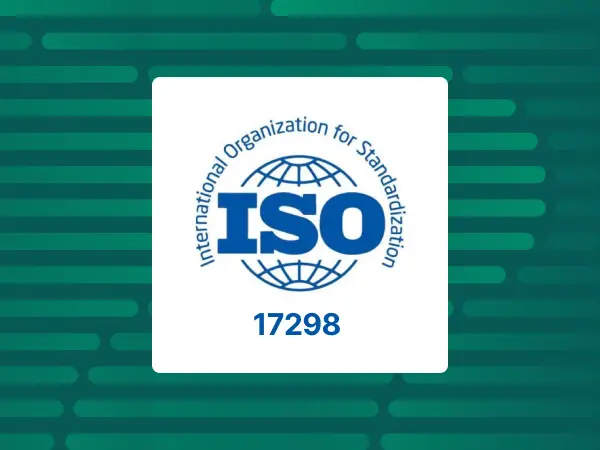{summary#bullet-1}
What is CBAM?
The CBAM (Carbon Border Adjustment Mechanism) is the carbon adjustment mechanism at borders, introduced by the European Union to address greenhouse gas emissions associated with the import of goods.
In other words, it's a Carbon tax on goods imported from non-EU countries, to avoid the phenomenon of Carbon Leakage, that is, the shift of production to countries with less strict regulations in terms of emissions.
What is the CBAM regulation for?
The CBAM It aims to ensure that goods imported into the EU comply Environmental standards similar to those required from European manufacturers. In this way:
- promotes fair competition between internal and external producers;
- encourages the adoption of sustainable practices in exporting countries;
- supports the EU's commitment to climate neutrality by 2050.

{summary#bullet-2}
When does the CBAM come into effect?
The CBAM regulation It Came Into Force On October 1, 2023, And from this date a first transitional period has started, which will end on December 31, 2025.
In this first phase, carbon taxes are not yet imposed, but importers are obliged to provide information on the quantities of incoming products subject to the CBAM.
Dal January 1, 2026, instead, the final phase will begin, and importers will be required to pay CBAM Certificates. The first CBAM declaration, relating to goods imported in calendar year 2026, must be submitted by 31 May 2027.
{summary#bullet-3}
How the CBAM works: let's go into detail about the 2 phases
First CBAM phase (2023-2025): transition period
- Reporting obligation
- Dal October 1, 2023, importing companies must start monitoring and reporting the emissions (direct and indirect) incorporated into imported goods.
- There are no additional costs, but it's critical to prepare to integrate data into business systems.
- Dal October 1, 2023, importing companies must start monitoring and reporting the emissions (direct and indirect) incorporated into imported goods.
- Registration
- Companies must register on the official portal CBAM Registry to get your account. This allows them to access the reporting requirements and upload the required data.
A This link find the pdf with instructions for accessing the European Commission's “CBAM Registry” application.
- Companies must register on the official portal CBAM Registry to get your account. This allows them to access the reporting requirements and upload the required data.
Final phase (from 2026 onwards): entry into force of the complete CBAM mechanism
- Obligation to purchase CBAM certificates
- Dal 2026, companies will have to buy CBAM Certificates that reflect the carbon content of imported goods.
- The Price of certificates is calculated based on the average price of the ETS shares expressed in €/ton.
- Dal 2026, companies will have to buy CBAM Certificates that reflect the carbon content of imported goods.
- Calculation of embedded emissions
- Companies must provide a precise estimate of the emissions produced during the entire life cycle of the assets.
- If the exporting country has a carbon tax system, the CBAM makes it possible to deduct the costs already incurred.
- Companies must provide a precise estimate of the emissions produced during the entire life cycle of the assets.
- Annual obligations
- By the 31 May of each year (year following the reporting year), importers must submit a detailed declaration on the emissions incorporated in their imports, and purchase the necessary certificates to cover the declared emissions.

{summary#bullet-4}
Which goods are subject to CBAM?
In this first phase, the regulation applies only to a limited number of goods, characterized by carbon-intensive production:
- cement;
- steel and iron;
- aluminum;
- fertilizers;
- electricity;
- Hydrogen.
The list may be expanded in the future to include other categories.
CBAM vs ETS: what are the differences
We have seen that the price of certificates is calculated based on the average price of EU ETS quote. But what is the ETS? And what does it have to do with CBAM? Let's do a short recap.
- THEETS is the “cap & trade” system for the exchange of EU emissions allowances; it concerns European producers, forcing them to buy quotas for the emissions produced.
- The CBAM, on the other hand, imposes an equivalent cost on the emissions incorporated into imported goods.
{summary#bullet-5}
CBAM statement: what does it consist of
La CBAM statement Must contain:
- the total quantity of each type of goods imported in the previous calendar year, expressed in MWh (megawatt hours) for electricity and in tons for other goods;
- the total emissions incorporated in goods, expressed in tons of CO2 emissions2 equivalent (per megawatt hour or per ton depending on whether it is electricity or other goods);
- the total number of CBAM certificates to be returned, corresponding to the total declared emissions incorporated into the goods;
- the price to be paid in the country of origin for emissions incorporated into imported goods;
- copies of the verification reports, issued by the accredited verifier.
Who must make the CBAM statement?
The CBAM statement is mandatory for importers of goods covered by the mechanism. Companies must register on the official portal, provide a report of the emissions incorporated into imported products and purchase the necessary certificates. To obtain the qualification of authorized CBAM registrant an application must be submitted to the competent authority of the member state.


























